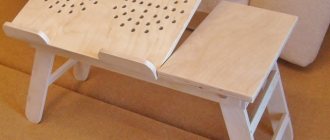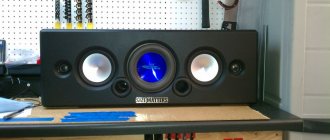Computer equipment with a processor installed inside it heats up during operation. While working, the processor consumes electricity and converts almost 100% of it into heat. The power of modern processors is enough to heat up to 100 degrees Celsius in a matter of seconds. Unfortunately, these temperatures are unacceptable for the CPU to operate acceptably, and it must be cooled. The cooling and heat dissipation system is an integral attribute of a laptop. It allows you to keep the temperature of the CPU and other components within normal operating limits.
Reasons for laptop overheating
Long-term use, wear, ill-conceived design of cheap models, or all together become the reasons for overheating of the laptop:
- In general, the main reason for overheating is the dimensions of the laptop, namely the compactness of its body. The task of many manufacturers is to fit productive hardware into a compact case and organize thoughtful heat dissipation. Due to the tight fit of the parts to each other, this is very difficult to do, since the air flows have a miniature space for air circulation.
- Additional interfering elements in the cooling of laptop PC parts are lint, hair, wool, dust or other small and light particles that tend to accumulate in places where air flows and on the radiator. This fact sharply reduces the performance of the device, the fan accumulates debris and its efficiency indicators drop sharply.
- Factory defects or damage during operation of the fan sometimes cause the laptop to overheat. Popular reasons for poor cooler performance are faulty bearings or lack of lubrication.
- Using the device for a long time without maintenance can cause the thermal paste on the processor to dry out. Thermal paste acts as a spacer between the processor and the heatsink, and absorbs a small percentage of the heat generated.
- Improper use often leads to overheating or dust accumulation inside the case. For example, by placing a laptop not on a hard surface, but on a blanket, you can block the ventilation holes, and there will simply be nowhere for cold air to come from.
Cooler replacement/repair
More experienced users, if the fan is at fault, can independently service it or replace it with a similar or more powerful one.
As for maintenance, you can only replace the bearing grease.
This can usually be done at home when the fan is spinning with great difficulty. Generally, it rotates easily with a light finger touch or blow.
If this is not the case, the component must be replaced (or its bearing, which is sometimes more difficult and time-consuming).
Any user can remove the old cooler by opening the latches or unscrewing the screws and turning off the power to the device, if the action does not require disassembling half of the device.
Removing the old cooler
Symptoms
To measure the temperature inside a portable device, use the thermostat information from the BIOS/UEFI or install AIDA64 for accurate temperature determination in Windows OS. You can work with any other program that will show the heating of PC components. They can also monitor the performance of the cooler.
Each component has its own operating standards under which it operates normally. When these comfortable temperatures are exceeded, some malfunctions occur in the robot and productivity decreases. The permissible, maximum and idle temperatures are different for each laptop component.
| Component | Simple | Average load | Maximum load | Critical Load |
| CPU | Up to 50 °C | Up to 65 °C | Up to 80 °C | Above 80°C |
| Video card | Up to 40 °C | Up to 75 °C | Up to 93 °C | Above 93°C |
| HDD | Up to 30 °C | 30-40 °C | Up to 50 °C | Above 50°C |
If your laptop is overheating, you can tell by the following symptoms:
- The fan makes noise during operation;
- The outlet air is excessively hot;
- The body of the portable device is very hot;
- The laptop suddenly turns off under load.
Cooling system design
Like any other system, this one has its constituent elements. Each of them has its own functional purpose. If at least one component has lost its functionality, the laptop cooling system may need to be repaired. Let's take a closer look at the design of the cooling system:
- Contact surfaces. This element of the cooling system device is designed to transport heat to the heat exchange zone.
- Heat pipes containing a special liquid designed to absorb heat. They are made of copper. It is the heat pipes that are most responsible for the quality of heat removal from particularly hot laptop parts.
- Heat exchanger or radiator of the cooling system. It consists of heat-conducting plates (copper or aluminum). They are installed in a laptop in sets of several dozen pieces each. The power of the radiator is determined by their number.
- A fan whose cavity rotation speed is controlled by thermal sensors. This is perhaps the most important component of CO. It is the fan that is the source of powerful air flow, the main purpose of which is to blow heat outside the laptop. For this purpose, there are small holes in the body of each device.
How does overheating affect laptop performance?
Ignoring overheating is not the best solution, because it will lead to rapid wear of all parts of the laptop. For example, a processor that is constantly exposed to high temperatures may begin to slow down and perform tasks slowly. A critical load can destroy the integrity of the processor's crystal structure.
At maximum load, throttling (sharp drop in CPU frequencies) and error messages in the programs or operating system processes used are often observed.
Sometimes the CPU has to perform the same calculation multiple times to produce the correct result.
This effect is clearly expressed in high-performance computer games. In addition to the game itself slowing down, the laptop may completely shut down. This is a last resort measure to prevent the device itself from overheating and to protect heated components from damage.
A laptop that has worked in unacceptable temperature conditions fails after 2-4 months.
Symptoms of problems in the operation of the system
Any breakdown or problem that arises in the operation of any mechanism does not go away “asymptomatically”. Even the most inexperienced user can easily notice problems in the operation of the cooling system. So, among the most striking indicators of incorrect operation of the CO are:
- Severe overheating. Have you ever noticed that your laptop gets too hot? Especially its bottom. Sometimes the temperature reaches such an extent that working with such a device becomes simply unbearable. This is direct evidence of poor, low-quality work of the system. Heat does not blow out, which in turn causes it to build up and transfer to the external parts of the laptop (case, keyboard, monitor).
- Strong noises previously uncharacteristic of a laptop. The explanation for this “symptom” is similar to the previous one – problems in the operation of the system.
- Slowdowns in work, braking, freezing, frequent reboots of an arbitrary nature. Have you guessed the reasons? Severe overheating of laptop parts significantly complicates its operation. In fact, parts (motherboard, video card, etc.) become unusable for some time. The normal functioning of the system becomes simply impossible.
If you have noticed the symptoms of poor cooling system operation described above, you can try to fix the problem yourself. The most effective methods will be presented and discussed below.
Ways to eliminate overheating factors
Monitoring your computer's performance is the key to long-term operation of the device. If overheating is evident, consider all ways to reduce the temperature: from proper operation to purchasing special equipment for better air circulation.
Operate your laptop correctly
The main rule of operation is not to cover the outlets for blowing out hot air and provide enough space for cold air to enter the housing. For this:
- Place the laptop on a hard, flat surface that is not subject to rapid heating. For example, a wooden or glass table.
- Do not move the laptop's air outlets close to other devices or close to a wall. Leave a gap of at least 20 cm.
- Try to use less sofas, carpets, blankets, beds and other uneven and quickly heating surfaces as a laptop stand. If you cannot do without this, purchase a special laptop stand with special holes for hot air exhaust.
Install programs to monitor your laptop's temperature to prevent temperature increases in advance.
Close unused processes and software
First of all, a laptop is a portable device used for office tasks. Accordingly, this device simply cannot cope with many high-performance tasks due to the characteristics of the hardware. If the laptop is not a gaming laptop and working with several dozen tasks is too much work for it, it is recommended to close all software that is not currently being used. Open the task manager and check which tasks are putting the most stress on system components. If you don't need them for your job or your Windows operating system, close them.
It is recommended to close other unused tasks and processes.
Power Regulation
Windows OS provides special templates for the power plan. There are three options:
- Energy saving. PC performance decreases (at the same time heating decreases) and less electricity is consumed.
- Balanced. Balance between power consumption and performance.
- High performance. PC power can be used without restrictions, even if it requires more energy (and therefore generates more heat).
Set item 1 or 2 and monitor the operation of the laptop. You can open these parameters using the Ctrl+R combination by executing the command control.exe powercfg.cpl,,3.
Temporarily shutting down the laptop
If the laptop gets very hot and slows down, turn it off. It is recommended to turn it off in the operating system by pressing Alt+F4. But, if the laptop practically does not respond to commands, turn off the hardware by pressing and holding the power button for 3-10 seconds.
Gradually, the idle device will cool down, and after 10-20 minutes it will be possible to turn it on.
Cleaning dust and replacing thermal paste
It is recommended to periodically clean the inside of the laptop once a year. If the device is used regularly or in a highly dusty environment, you can clean it to remove dust more often.
Thermal paste can be replaced while cleaning the laptop. Good thermal paste is durable and you don’t have to worry about replacing it for 3 years from the time you purchased the laptop. If there is an increased temperature of the processor during idle time, the manufacturer may have saved on thermal paste and will have to be replaced.
For high-quality cleaning, you need to disassemble the entire laptop, and later be able to put it back together. If you are not an electronics engineer and you have no experience in disassembling such equipment, it is recommended that you take this gadget to a specialized service for cleaning.
If you need to carry out emergency dust cleaning, you can:
- Use a Phillips screwdriver to unscrew the bolts and remove the bottom housing cover.
- Remove dust with napkins or cotton swabs.
- Use a vacuum cleaner or a can of compressed air to blow out any dust accumulated between the radiator fins.
Fan replacement
You can determine that the cooler has malfunctioned by an extraneous knocking sound when the blades move. Also, it should be replaced if its speed is weak or completely zero.
In some cases, you can get by with bearing lubrication. If you do not have experience disassembling portable devices, leave computer equipment repair to professionals.
Software cooling
Some programs allow you not only to control the temperature and fan speed, but also provide access to control these coolers. For example, the BIOS of some laptop models has cooling system operating modes.
Also, for discrete graphics cards there are programs that provide exactly the same functionality. With its help, you can set the cooler speed to low or force the laptop fan to load at 100%. Detailed information is provided in the article on software cooling of a laptop .
Notebook Stand
How to cool your computer? If you cannot ensure good air circulation in your laptop using standard methods, you can purchase a special laptop stand. It consists of a material that is poorly susceptible to heat, and at least one fan that circulates air from under the laptop. This creates an additional 5-10 degrees of cooling for a portable gadget.
To power the cooler, the stand is connected via the USB port of the main device.
We keep everything under control
Cooling a laptop is not difficult, fortunately, the market is always driven by the needs of its consumers.
Nowadays you can purchase a lot of gadgets and even installations that allow you to keep the temperature of your device within acceptable limits.
For the purposes of this article, we will consider only hardware for cooling a laptop computer. This cannot be done with programs, unless it is necessary to clear the list of software that automatically starts with the OS and close unnecessary applications.
The only thing that will help, besides killing unnecessary programs, is managing the state of the processor.
- Launch the “Power Options” applet through the search bar or Control Panel.
- Go to the settings of the current power plan.
- Call up additional power settings.
- Expand the processor power management point.
- We reduce its maximum state.
Power supply
Power plan
Additional meal plan settings
Changing the Processor Limit State
Rating of the best cooling pads
There are various models of stands that improve the cooling of the device. In this case, the laptop model and manufacturer are not important. This could be ASUS Aspire, a laptop from Xiaomi or Samsung, HP Pavilion or Dell. Most stands are available for owners of any laptop model:
- Kootek Laptop Cooling Pad Chill Mat 5. Composed of five fans, the stand will provide the best cooling for any laptop. One 120 mm cooler in the center and 4 70 mm on the sides look organic, work quietly and cover the entire possible area of the bottom of the laptop. You can choose which fans will be turned on. Stand size 380 x 300 x 35 mm. Suitable for devices with display sizes from 12 to 17 inches. There are six height adjustment modes. Two stoppers on the front secure the laptop when the stand is tilted.
- Cooler Master NotePal XL. One quiet 230mm fan provides optimal airflow for the laptop. The dimensions of the stand are 305 x 379 x 47 mm, which means they will cool a 17-inch portable device without any problems. If the laptop itself only has 2-3 USBs, then as a bonus to the stand there are three additional USB ports on the case. The stand can be tilted, for example, for convenient viewing of videos.
- Enermax Twister Odio 16. The advantage of this accessory is the built-in 2W speakers. Minus - not suitable for 17-inch laptops. Thick, durable and well made, the stand has dimensions of 352 x 270 x 52 mm. The speakers and fan speed are manually adjustable.
- Tree New Bee Cooling Pad. The designer-shaped platform has four 110 mm fans. You can disable 2 of them and manually adjust the rotation speed of the coolers. The tilt angle allows for comfortable work when watching a movie or typing text in a comfortable chair. Dimensions: 408 x 287 x 28 mm. 17 inch devices are doing great. The downside is that there is no height adjustment.
- Zalman ZM-NC2500Plus. The secret of the stand is that the coolers are not placed at the bottom and just look at the floor, but on the rear panel. This achieves minimal noise and maximum possible performance from two 70 mm fans.
Well, so that the extra space doesn’t just sit idle, there is a compartment for a 2.5-inch hard drive at the bottom, and there are 3 USB ports on the side panel. - The Zalman ZM-NC3000S is intended for those who are not comfortable with the concept of two side fans. One bulky 220 mm fan located at the bottom will allow for greater air flow at a lower rotation speed. This shot kills two birds with one stone: high-quality cooling of a 17-inch laptop plus low noise from fan rotation.
Stands with effective cooling will help reduce the overall temperature of the laptop by 5-10 degrees during maximum loads of the laptop PC (games, video conversion, software compilation, etc.). With such a load, the noise level of the stand can be neglected, because the noise from the laptop cooler will be 40 dBA.
Unfortunately, it will not be possible to achieve greater cooling using a laptop stand, since 90% of the work depends on the standard cooling system of the portable device.
The market offers
The choice of means to cool a laptop is small, but it exists. The most common cooling gadget is a table with a fan.
Such tables differ in the number of fans, shape, design and the presence of other features (height adjustment, rotation, drawers, tilt).
They are more suitable for home use.
Laptop table
For regular trips and travel, a stand with a cooler is better suited - a smaller and less functional copy of the table in terms of ergonomics.
Stand with cooler for laptop
You can buy everything on a famous Chinese website.
This includes additional radiators with a layer of heat-conducting paste for just a couple of dollars, but only if there is room in the case for additional elements.
Additional radiators on heating elements
For enthusiasts and lovers of something new (and expensive), water cooling systems are coming into production.
Naturally, they are suitable only for gaming laptops; for low-power devices there will be very little point in purchasing a water cooling system.
If you can’t spend money on purchasing a table or stand, provide your laptop with improved air circulation.
Raise it above the table surface a couple of centimeters so that there is air space between the table and the laptop (a book, for example, will not work in this case).
« Previous entry
If there is a need for new radiators
When upgrading, the user may encounter the problem of being unable to install a fan with higher power. This is often due to the fact that they simply do not fit a certain model. Inconsistencies in dimensions and mounting holes reduce the possibility of modernization to almost zero.
How can the situation be corrected in this case? The answer lies in the additional copper plates on the radiator. Additional radiators increase the heat dissipation area. This, in turn, simplifies the operation of the already installed, “factory” cooler, and all cooling problems disappear. For example, owners of Asus equipment in most cases eliminate overheating problems in this way. We hope this information will help you get your laptop up and running without breaking the bank.
What is an OS upgrade?
Upgrading the laptop cooling system will be required if all previous methods for eliminating the problem in question have proven ineffective. In some cases, the problem is not at all in the external configuration and errors in its operation. The problem may be internal, systemic. Extremely “heavy” programs may be installed on the user’s laptop, forcing the video card and processor to work at their full capacity.
To normalize the operation of the system in such cases, the computer must be upgraded. You will need to install a more powerful cooler comparable to the specific model. At the same time, in a new fan the pinout may be completely different. Then the modernization should be continued by re-soldering the contacts.











